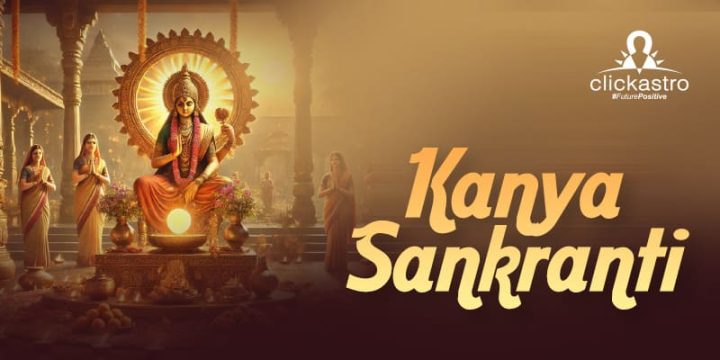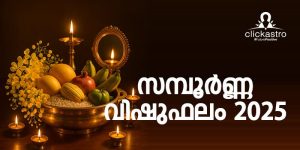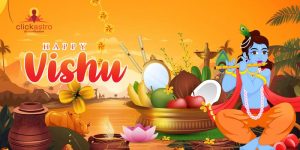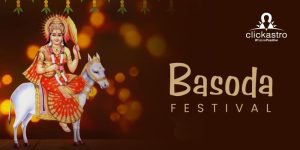Introduction
Kanya Sankranti is a significant festival celebrated with reverence and enthusiasm across India. It marks the transition of the Sun from
Simha Rashi (Leo) to
Kanya Rashi (Virgo), an event that holds profound astrological and spiritual importance. This celestial shift is not merely an astronomical occurrence but is deeply intertwined with various cultural practices, making Kanya Sankranti a day of renewal and gratitude.
Kanya Sankranti 2024 is on September 16 Monday
The festival symbolizes the beginning of a new harvest season, bringing with it hopes for prosperity and abundance. It is a time when devotees come together to perform rituals, offer prayers, and make charitable donations, all of which are believed to cleanse the soul and attract divine blessings. Kanya Sankranti offers an opportunity for people to connect with their spiritual roots, celebrate their work, and honour the divine architect, Lord Vishwakarma.
Kanya Sankranti Important timings
- Sunrise – September 16, 2024 6:17 AM
- Sunset – September 16, 2024 6:25 PM
- Sankranti Moment – September 16, 2024 7:43 PM
- Punya Kaal Muhurta – September 16, 12:21 PM – September 16, 6:25 PM
- Maha Punya Kaal Muhurta – September 16, 4:24 PM – September 16, 6:25 PM
Understanding the Significance of Kanya Sankranti
Kanya Sankranti transcends its astronomical roots and embodies a rich cultural and spiritual significance. The Sun’s transition from Simha Rashi (Leo) to Kanya Rashi (Virgo) marks not only a shift in the zodiac but also the onset of a new harvest season.
This period is of immense importance, particularly for farmers, as it signifies the time when they begin to reap the rewards of their labour. The abundance brought by the harvest is a powerful metaphor for the outcomes of hard work and perseverance, reminding us that dedication and effort yield bountiful results.
Beyond its agricultural importance, Kanya Sankranti symbolizes a broader theme of transition and renewal. As the Sun moves into Virgo, it invites individuals to embrace change, cleanse their lives of negativity, and open themselves to new opportunities. This theme resonates within the spiritual practices associated with the festival.
Kanya Sankranti is considered an auspicious time for engaging in acts of charity and devotion. This period holds potent spiritual energy, making it ideal for performing Shradh puja, a ritual dedicated to the welfare of one’s ancestors. By conducting these rituals, devotees seek to honour and appease the spirits of their forebears, ensuring their peaceful transition in the afterlife and securing their blessings for the living.
Charitable activities are another key aspect of Kanya Sankranti. Offering daan (donations) to the needy, whether in the form of food, clothes, or money, is seen as a way to cleanse one’s soul and attract positive karma. These acts of generosity are not only a means of spiritual growth but also a way to foster a sense of community and shared well-being.
The Legend Behind Kanya Sankranti
Kanya Sankranti is deeply enriched by ancient narratives. Central to them is the reverence for Lord Vishwakarma, the divine architect of the gods, whose birth anniversary is commemorated on this auspicious day. Known as Devashilpi, or the “Architect of the Gods,” Vishwakarma is the deity who crafted some of the most significant and sacred structures in the universe.
One of the most celebrated achievements of Lord Vishwakarma is the construction of
the city of Dwarka, the kingdom of Lord Krishna. According to the legends, after the great war of Mahabharata, Lord Krishna needed a place to establish his kingdom, a city that would reflect his divine stature. Vishwakarma, with his unparalleled expertise and divine skill, built Dwarka on a piece of land reclaimed from the sea. The city, known for its opulence, beauty, and strategic design, became a symbol of Vishwakarma’s supreme craftsmanship.
Another legendary creation attributed to Vishwakarma is the Maya Sabha, the grand assembly hall of the Pandavas in the Mahabharata. The Maya Sabha was an architectural marvel, a structure so magnificent and intricate that it left even the gods in awe. Vishwakarma’s ability to blend beauty with functionality made this hall not only a place of assembly but also a symbol of power, wealth, and divine favour.
In addition to these grand structures, Vishwakarma is also credited with crafting numerous powerful weapons for the gods, including the celestial weapons used by the heroes in various epics. The Sudarshana Chakra of Lord Vishnu, the Trishula of Lord Shiva, and the Vajra of Lord Indra are just a few examples of Vishwakarma’s legendary creations. These weapons were not merely tools of war; they were embodiments of divine power and precision, crafted with unmatched skill and devotion.
Worshipping Lord Vishwakarma on Kanya Sankranti is believed to invoke his blessings, bestowing his devotees with the same level of skill, precision, and dedication that he exemplified. Artisans, craftsmen, and workers in various trades across India observe this day with great reverence, organizing Vishwakarma Puja in their workplaces. They clean and decorate their tools and machines, offering prayers to Vishwakarma to ensure that their work in the coming year is marked by excellence and success.
Rituals and Celebrations of Kanya Sankranti
Kanya Sankranti is observed with a variety of rituals and traditions across India, each reflecting regional customs and cultural heritage. The day typically begins with devotees taking an early morning bath, often in sacred rivers, which is believed to purify the soul and wash away sins.
Vishwakarma Puja:
Central to Kanya Sankranti is Vishwakarma Puja, particularly in industrial towns and among artisans, craftsmen, and workers. Workshops, factories, and businesses organize pujas to honour Lord Vishwakarma. On this day, machines and tools are cleaned, decorated with flowers, and worshipped to ensure smooth operations and safety in the coming year. No work is conducted on this day, as it is dedicated to seeking blessings for better productivity and prosperity.
Offerings and Prasad:
Traditional food offerings, including khichdi, kheer, fruits, and sweets, are prepared and offered to Lord Vishwakarma. After the puja, the prasad is distributed among family members, workers, and community members, symbolizing unity and shared blessings.
Shradh Puja and Daan:
Another important aspect of Kanya Sankranti is performing Shradh puja for the ancestors. This ritual is a way to honour and seek the blessings of departed souls. Additionally, making donations (daan) to the needy is considered highly auspicious, enhancing the spiritual merit of the giver.
Cultural Celebrations:
In various parts of India, Kanya Sankranti is celebrated with vibrant processions, cultural performances, and community feasts. In Bengal and Orissa, the festival is marked by grand Vishwakarma Puja celebrations in industrial towns, with artisans and workers paying tribute to the divine architect.
Kanya Sankranti Across India
Kanya Sankranti, while rooted in the same celestial event across India, manifests in diverse cultural practices and rituals depending on the region. Each state adds its unique flavour to the celebrations, blending local traditions with the festival’s overarching themes of gratitude, renewal, and reverence.
In Tamil Nadu, Kanya Sankranti coincides with the Purattasi month in the
Tamil calendar. This period is highly auspicious for offering prayers to the Sun God, Surya, who is revered as the life-giver and the source of all energy. Devotees in Tamil Nadu observe Kanya Sankranti by taking holy dips in sacred rivers and other water bodies, a ritual believed to cleanse sins and purify the soul. Charity plays a significant role during this time, with people making donations to the poor and providing them with food, clothes, and other essentials. This act of giving is considered a way to honour the divine and seek blessings for prosperity and well-being.
In Kerala, the festival is known as Kanni Masam. Here, Kanya Sankranti is a time to honour one’s ancestors through rituals and prayers. The day is marked by the performance of Shradh ceremonies, where offerings are made to departed souls to ensure their peace in the afterlife. This practice underscores the deep respect and reverence for ancestors in Kerala’s cultural traditions. Additionally, families seek blessings for a prosperous and harmonious life, hoping that the good karma generated through these rituals will bring success and happiness in the coming year.
In states like Bihar, Maharashtra, and Gujarat, Kanya Sankranti is closely associated with Vishwakarma Puja, a celebration dedicated to Lord Vishwakarma, the divine architect and craftsman of the gods. In these regions, the festival is particularly significant in areas where artisans, craftsmen, and industrial workers are prominent. On this day, temples dedicated to Lord Vishwakarma become centres of activity, with special prayers, rituals, and community gatherings being held to honour the deity. Workshops, factories, and other workplaces are cleaned and decorated, and tools and machinery are worshipped to ensure smooth operations and success in the year ahead.
Special Foods and Delicacies
Kanya Sankranti is as much a culinary celebration as it is a spiritual one. The festival is marked by the preparation of traditional dishes that hold cultural significance, bringing families and communities together in a shared expression of joy and gratitude. The aroma of festive foods like khichdi, kheer, laddoos, and other delicacies fills the air, creating a warm and inviting atmosphere.
Khichdi, a simple yet nourishing dish made of rice and lentils, is a staple during Kanya Sankranti. It symbolizes humility and the basic sustenance that nurtures both body and soul. Often, it is flavoured with ghee, spices, and seasonal vegetables, making it both delicious and hearty. Kheer, a sweet rice pudding made with milk, sugar, and cardamom, is another popular dish, often garnished with dry fruits and saffron to enhance its flavour and richness.
Laddoos, particularly those made from ingredients like sesame seeds, jaggery, or gram flour, are prepared as offerings to the deities and shared among family and friends. These sweet treats are not only enjoyed as prasad (sacred offerings) but also as symbols of prosperity and sweetness in life.
The act of cooking and sharing these meals holds deep significance, as it fosters a sense of community and strengthens bonds among family members and neighbours. Eating together during the festival is more than just a meal; it is a communal ritual that reinforces cultural values and the spirit of togetherness. Through these shared culinary traditions, Kanya Sankranti becomes a celebration of both spiritual devotion and the joys of communal living.
Embracing the Spirit of Kanya Sankranti in 2024
As we prepare to celebrate Kanya Sankranti 2024, it’s essential to remember the deeper meaning behind the festivities. This day is a reminder to honour our work, appreciate the tools and skills we possess, and seek divine blessings for continued success and prosperity. It’s a time to come together as a community, to share in the joy of giving, and to embrace the changes that life brings.
Whether you’re participating in the rituals, enjoying the festive foods, or simply spending time with loved ones, let the spirit of Kanya Sankranti inspire you to live with purpose, dedication, and gratitude. After all, each festival is a thread in the rich tapestry of life, adding colour, meaning, and joy to our journey.








